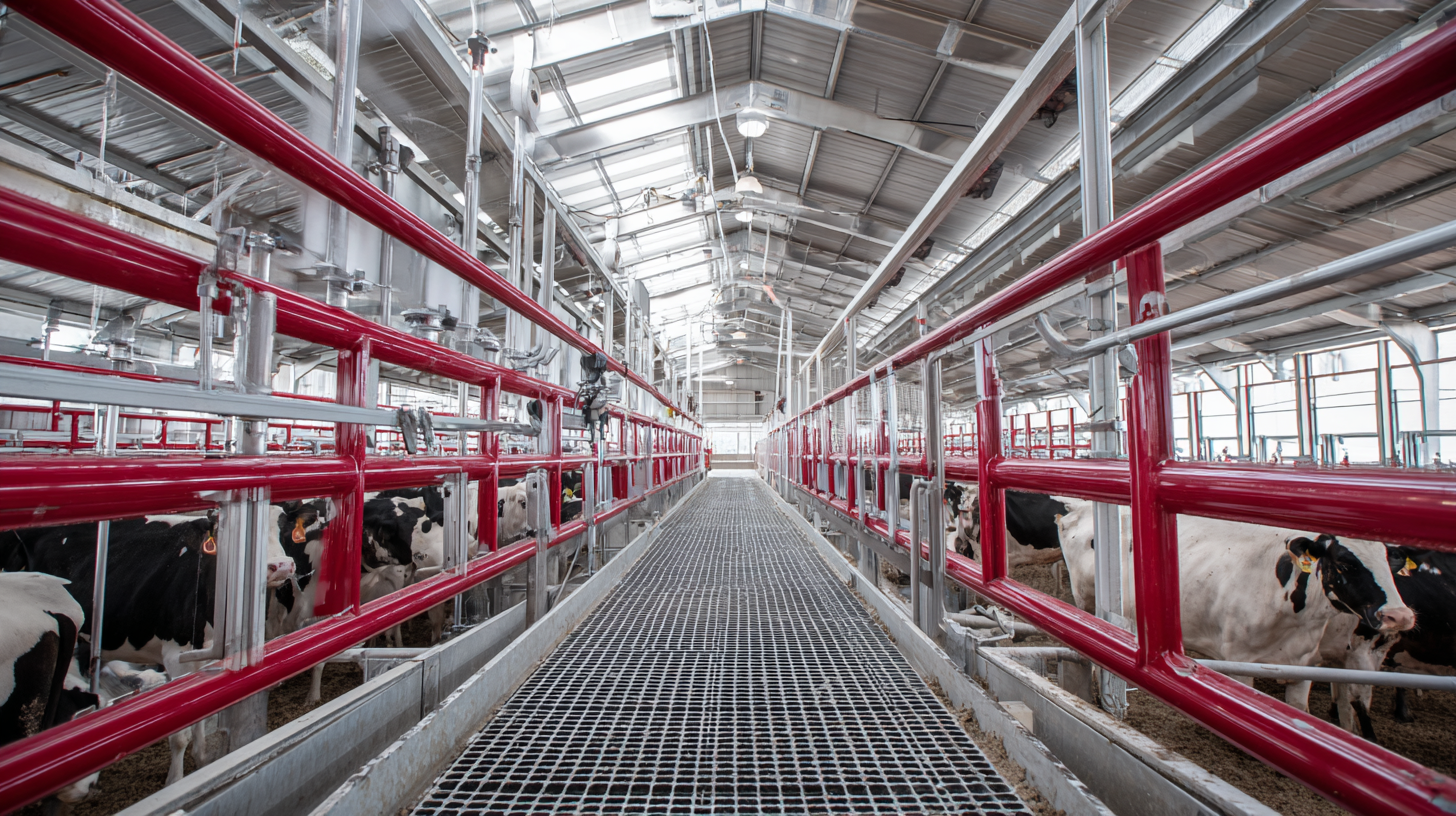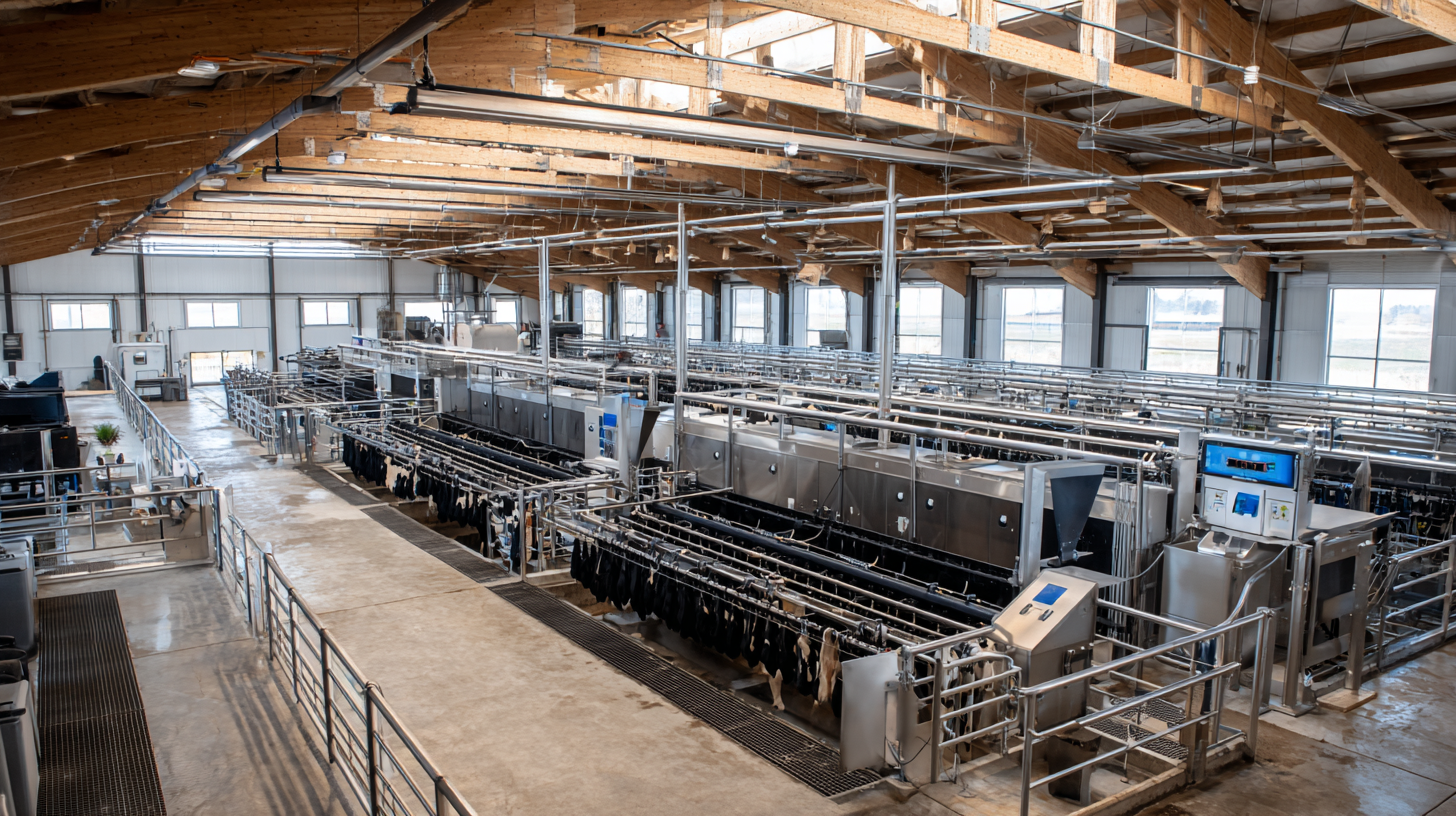
Essential Dairy Barn Equipment Upgrades for Modern Farming Efficiency
As the dairy industry continues to evolve, the demand for greater efficiency and productivity in dairy barn equipment has never been more crucial. According to a recent report by the International Dairy Federation, modernizing dairy facilities can lead to a 20% increase in overall operational efficiency. Key upgrades in dairy barn equipment not only enhance the milking process but also improve animal welfare and milk quality. Implementing advanced technologies, such as automated milking systems and climate control solutions, is essential for contemporary dairy operations.

Moreover, the USDA highlights that farms utilizing state-of-the-art equipment experience a significant reduction in labor costs, reinforcing the importance of investing in the right dairy barn equipment for future success. As dairy farmers strive to meet growing consumer demands and regulatory standards, these essential upgrades are fundamental for sustaining competitive advantages in the marketplace.
Identifying Key Dairy Barn Equipment for Modern Farming Needs
In modern dairy farming, the efficiency of operations heavily relies on the equipment utilized in the dairy barn. Key upgrades such as automated milking systems represent a significant leap forward, allowing for more precise and timely milking processes. These systems not only enhance productivity but also improve animal welfare by reducing stress associated with manual milking. Additionally, integrating temperature-controlled environments ensures that milk quality is maintained right from production to storage, making it essential in meeting both safety standards and consumer expectations.

Another crucial piece of equipment is the advanced feeding system, which incorporates technology to optimize feed distribution. This allows farmers to tailor diets to the specific nutritional needs of each cow, improving milk yield and overall herd health. Furthermore, investing in efficient waste management systems can significantly reduce environmental impact while lowering operational costs. By systematically addressing these areas of dairy barn equipment, farmers can enhance overall productivity and ensure a sustainable future in modern dairy farming.
Evaluating the Benefits of Automated Milking Systems
Automated milking systems (AMS) are revolutionizing the dairy farming industry, offering significant benefits in terms of efficiency, labor management, and animal welfare. These systems streamline the milking process, allowing cows to be milked on their own schedule. This not only enhances milk production but also reduces stress for the animals, resulting in healthier cows and higher quality milk.
When considering an upgrade to automated milking systems, it’s essential to evaluate the specific needs of your farm. Tips for implementing AMS effectively include assessing your herd's size and milking frequency to choose the right system capacity. Additionally, investing in smart technology that monitors cow health can provide real-time data, making it easier to manage your herd’s overall well-being. Regularly maintaining the equipment can also prevent downtime and ensure consistent performance.
Moreover, transitioning to AMS can significantly lower labor costs, allowing farmers to allocate their workforce to other critical tasks around the farm. Training staff on the new technology is crucial for maximizing the system's potential. By embracing automation, dairy farmers can not only increase their productivity but also enhance the sustainability of their operations.
Essential Dairy Barn Equipment Upgrades for Modern Farming Efficiency
Incorporating Advanced Ventilation Solutions for Cow Comfort
Proper ventilation in dairy barns is crucial for ensuring cow comfort and enhancing overall farm efficiency. According to a 2022 report by the American Society of Agricultural and Biological Engineers, effective ventilation systems can reduce the temperature of a barn by up to 10 degrees Fahrenheit during hot months, significantly improving the thermal comfort of dairy cows. This comfort is directly linked to productivity; research shows that well-ventilated barns can increase milk yield by as much as 10-15%.
To optimize ventilation, consider incorporating advanced solutions such as tunnel ventilation or insulated barn designs. These systems not only promote better air circulation but also help in managing humidity levels effectively. A study from the University of Minnesota highlights that maintaining proper humidity levels below 70% in dairy barns can lead to healthier livestock and lower incidence of respiratory diseases.
Tip 1: Regularly assess ventilation performance. Invest in monitoring systems that track temperature and humidity levels throughout the barn.
Tip 2: Ensure a proper airflow path by positioning fans and inlets strategically. Cross-ventilation can be particularly effective in larger barns.
Tip 3: Implement scheduled maintenance for ventilation equipment to ensure they operate efficiently throughout all seasons, minimizing downtime and preventing discomfort for the cows.

Optimizing Feed Management with Smart Feeding Technologies
In modern farming, efficient feed management is crucial to optimize dairy production while minimizing waste and costs. Smart feeding technologies have revolutionized how farmers manage their livestock's diets, ensuring that each cow receives the ideal nutrients for optimal health and milk output. Innovations such as automated feeding systems and real-time monitoring tools allow farmers to track feeding patterns and adjust rations dynamically based on individual animal needs.
Tips: Implementing a smart feeding system can seem daunting, but starting small can lead to significant improvements. Begin by investing in basic automated feeders, then gradually incorporate data analytics to fine-tune feeding schedules and diets for your herd. Regularly reviewing and updating feeding strategies based on performance metrics will help maximize efficiency and ensure cows are fed the right amounts at the right times.
Additionally, integrating mobile apps that monitor feed consumption can provide valuable insights into herd health. These apps allow farmers to detect issues early, leading to quicker interventions. Proper training for staff on using these smart technologies effectively can also yield better results, ensuring that everyone is aligned in achieving optimal feed management.
Implementing Energy-Efficient Lighting and Insulation Upgrades
The implementation of energy-efficient lighting and insulation upgrades in dairy barns can significantly enhance modern farming efficiency. According to recent industry reports, switching to LED lighting can reduce energy consumption by up to 75% compared to traditional lighting options. This drastic reduction not only lowers electricity bills but also contributes to a more sustainable farming operation. As energy prices continue to rise, these cost-saving measures become increasingly essential for dairy farmers aiming to maintain profitability.
Insulation upgrades in dairy barns also play a crucial role in energy efficiency. Enhanced insulation can decrease heating and cooling costs by an estimated 30%, leading to substantial long-term savings. With programs offering financial assistance for energy-saving upgrades, such as low-interest loans and rebates, farmers are encouraged to invest in better insulation materials. These enhancements not only improve the comfort and health of livestock but also align with recent trends in building regulations and market demands for energy-efficient structures. By prioritizing these upgrades, dairy farms can achieve a sustainable model that benefits both the environment and their bottom line.


